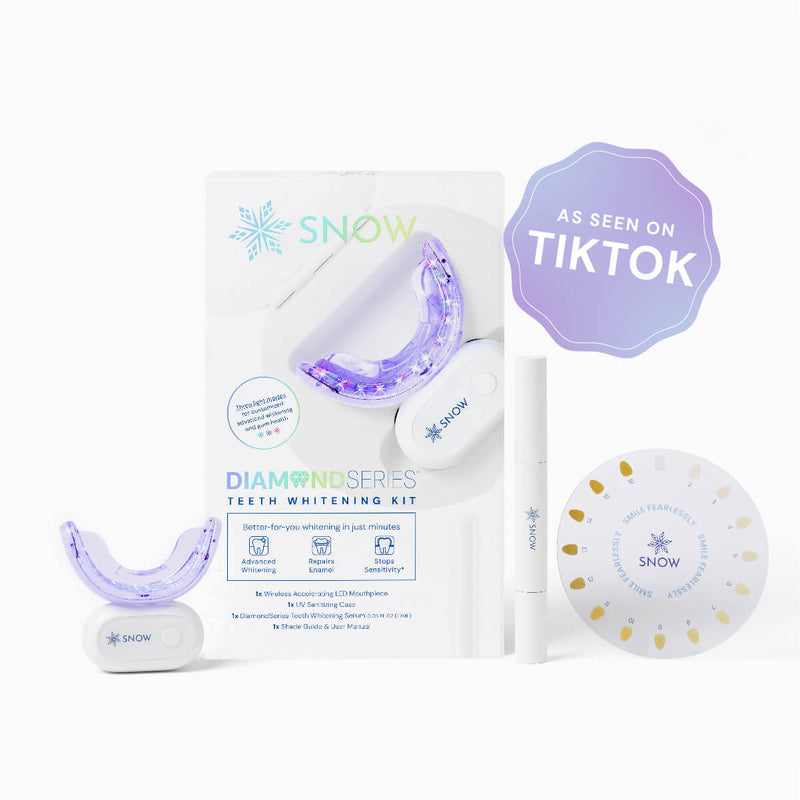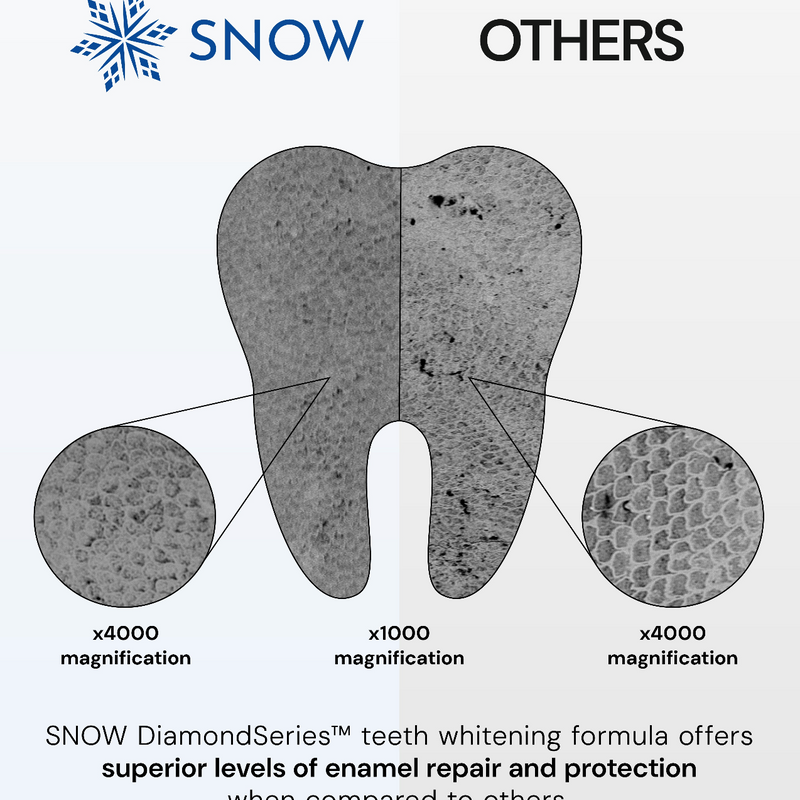Baking soda, or sodium bicarbonate, is a fine, white powder with several domestic applications. Baking soda is well known as a leavening agent, but it can do much more.
One of its most common applications is as a teeth cleanser and whitener. Is it, however, as safe and effective as regular toothpaste?
Here are the advantages and disadvantages of putting baking soda on your teeth and how to use it safely to eliminate plaque and oral germs.
How do you brush your teeth with baking soda?
This post will look at these four ways to use baking soda to whiten your teeth.
Baking soda and toothpaste
This is the simplest method. Sprinkle some baking soda on top of your toothbrush and toothpaste and brush your teeth like normal.
Baking soda with water
The most frequent method for whitening teeth is to use a solution of baking Soda with water. In a cup, combine a couple of water drops and 1/2 tsp sodium bicarbonate to produce a paste. Apply the paste to your teeth with a finger or brush and leave it for two to three minutes. Rinse completely with water.
Lemon and baking soda
Citric acid is a natural bleach liquid. Make a paste with 1/2 tsp baking Soda and 1/2 tsp lemon juice to whiten teeth. Brushing teeth with a lemon and baking soda combination will make them sparkle.
Baking soda with hydrogen peroxide
To whiten teeth, brush with a baking soda hydrogen peroxide paste. To make a combination, combine 1/2 tsp baking soda with 1/2 tsp hydrogen peroxide until there is a semi-liquid paste. Brush your teeth with this for two minutes. After that, rinse out with water or some mouthwash.
How to use baking soda safely
Baking soda must typically be used appropriately to protect your tooth enamel from harm. Baking soda should preferably also not be used too often because it might harm the enamel over time. It should be used no more than once per week and for no more than two minutes.
You should also not use baking soda as a substitute for toothpaste because it contains no fluoride. Fluoride protects teeth against cavities and strengthens the enamel. Using fluoride toothpaste and baking soda together can help to keep your teeth healthy. The solution shouldn’t be scraped forcefully on your teeth to protect gums and enamel. Before you use baking soda to clean your teeth, see your dentist first, especially if you have pre-existing gum problems or sensitive teeth.
The drawbacks and potential tooth decay of baking soda
There are specific hazards to cleaning your teeth with baking Soda. It can damage your enamel, making your teeth more sensitive to hot and cold temperatures than they should be. It can also make cleaning your teeth uncomfortable. Enamel damage can also render teeth more susceptible to cavities.
Baking soda might also weaken and soften the adhesive used on braces and other permanent dental fixtures or fittings. Thus persons who have fittings like this should avoid using it. Baking soda can be used improperly because there is no typical protocol to ensure its safe usage for tooth whitening. It may also cause gum damage and may not be ideal for certain people due to its flavor.
Baking soda is a mild abrasive that helps remove surface stains and discoloration from teeth. It is softer than other abrasive compounds used to whiten teeth.
It can wear away your enamel and harm your teeth and gums if misused. Even though it’s not as strong and abrasive as other whitening methods, daily solid brushing with a strong sodium bicarbonate solution will dissolve tooth enamel, which protects and strengthens teeth.
Plaque removal with sodium bicarbonate
Baking soda is effective at reducing plaque acidity and breaking up plaque formation. After eating and drinking, sugars in your teeth react with bacteria in your mouth to produce acid. When the pH of a solution goes below a certain level, the acid eats away at the enamel and dentin, producing tooth decay. Sodium bicarbonate raises the pH level in your mouth, generating an alkaline environment that inhibits the formation of cavities.
Brushing your teeth with baking soda will not kill bacteria, remove plaque, or prevent cavities on its own. While sodium bicarbonate can aid in the breakdown of plaque, it cannot prevent plaque formation and, as a result, tooth damage. Furthermore, sodium bicarbonate lacks fluoride, which aids in the strengthening of dental enamel and the protection of your teeth and gums from decay.
Advantages
Plaque and gingivitis are reduced
Biofilms are bacteria colonies that cling to your teeth, creating diseases such as cavities and gingivitis. Dental plaque is a kind of biofilm.
When brushing, granules of baking soda disturb the biofilm, lowering the bacteria level and helps to protect your gums and teeth.
Bacteria may be reduced
Some hazardous bacteria require higher acidic conditions in your mouth to grow.
According to studies, rinsing your mouth with a water and baking soda combination raises the pH, lowering the acid levels. Accordingly, baking soda as toothpaste can make it more difficult for bacteria in your mouth to increase.
Teeth whitening
Baking soda has a natural whitening capability and is proven excellent in removing stains and brightening your smile. As a result, it's a common constituent in many commercial kinds of toothpaste.
Several studies have demonstrated that baking soda is a moderate abrasive capable of removing stains outside your teeth.
Is there a fluoride-free method?
Fluoride in excess can be hazardous, especially for children under six. However, it is crucial to emphasize that fluoride poisoning is uncommon, and the hazards are only a worry when a substantial amount of fluoride is eaten.
Toxicity of fluoride
Pain, diarrhea, vomiting, renal, and heart issues can all be caused by fluoride toxicity. As a result, many individuals choose toothpaste devoid of fluoride and other toxins, such as baking soda.
Is it cheap?
Baking soda is inexpensive and widely available, costing around 50 cents per ounce in most stores.
Dealing with stains that will not come out with baking soda
Baking soda will not work on several stains. It may not remove some deeper stains, or it may not make teeth as white as some people like. Those who wish to whiten their teeth need to utilize a whitening solution because baking soda does not bleach the teeth.
People may employ natural tooth whitening products or procedures as an alternative to soda. Some tooth stains are internal, others are visible, and some may be addressed with whitening solutions while others cannot. Before using any whitening treatments or kits on your teeth, consult with your dentist.
Professional in-office treatments, use-at-home kits, and also over-the-counter solutions are the most frequent whitening procedures. Most whitening treatments use hydrogen peroxide as an active ingredient. The higher the concentration of peroxide in a product, the more probable it is to whiten teeth. Whitening goods used or available through a dentist will often include more peroxide than over-the-counter treatments, resulting in a more effective whitening.
Professional in-office whitening procedures are performed in the dentist's office and take around an hour to complete. However, they are more expensive than other approaches. Professional at-home kits are dental-provided mouthpieces or whitening solutions that may be used to whiten teeth at home and can deliver faster results than comparable over-the-counter kit choices.
Over-the-counter goods like strips, whitening toothpaste, and gum are less expensive than expert in-office treatments and at-home kits. There is no need to schedule an appointment with your dentist, and there are several types and brands to select from. You may require multiple treatments or use a solution numerous times before your teeth seem as white as you like. A whitening procedure or solution may need to be repeated again over time to maintain or keep the teeth white.
Brushing your teeth with baking soda can be an inexpensive option to remove tooth stains and whiten the teeth, but many whitening products and procedures may be more successful at doing so; folks should also consider them when seeking a whitening solution.
























